Geshe Samten Tsukphud is tightly connected with Shenten Dargye Ling. He stays there for long periods of time during the year and is a member of the managing body of Shenten´s Congregation. He is also the chief editor of Melong Yeshe, an online magazine in Tibetan language reporting mainly on events and activities taking place at Triten Norbutse Monastery but publishing also complex texts about various topics of the teachings of Yungdrung Bon.
When did you start the magazine and what is its content about, geshe la?
It was in 2015. Yongdzin Rinpoche and Khenpo Rinpoche blessed it with a small ceremony, lighting a butter lamp as a symbol of wisdom to be spread everywhere.
I was thinking about a name and finally decided for Melong Yeshe. It means mirror-like wisdom, it is a concept important in the religious context, as one of the five principal wisdoms. A mirror can reflect our face and all things that we put in front of it; similarly, we want to reflect all events and activities that are happening in the monastery throughout the year: rituals, ceremonies, examinations…
Who else besides you is involved?
Khenchen Tenpa Yungdrung Rinpoche and Ponlop Tsangpa Tenzin Rinpoche are members of the editorial board of the magazine. My best friend, geshe Woser Gyaltsen who lives in Germany, created the website for it, in wordpress, and he became its webmaster. Before that, I started something on a smaller scale, it was a kind of blog, and I was helped with that by Tom, one of Rinpoche´s students from Hungary. I used it for one year and then I switched to the current site which is supported by my friend, who also pays for the domain and all the service costs. Also, some friends from the monastery help me to get information and photos. And I have a friend, Khritsuk Tenpa, who is a teacher at the school in Siliguri, the school founded by Khenpo Rinpoche for the children from the Himalayas. He sends me information and pictures and we publish texts about the school too.
How many articles have you published?
Around seven hundred. Some texts like news are easier and do not take much time, but we also publish biographies, articles about history, or research of ancient texts. Those articles take quite a long time to write. But we always try to keep texts as short as possible, for internet reading it is better to keep it brief. We also have a section where we answer questions from our readers.
Who are your readers?
Different people, mainly Tibetans, monks and lay people too. Anybody who is interested in Yungdrung Bon and can also read Tibetan. Mostly they are Tibetans who live in Nepal, but also in Tibet.
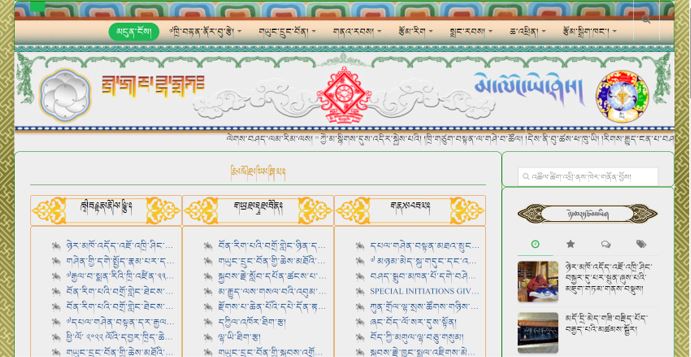
Your activities as an editor are larger than that. For example, you were involved in the new edition of Kangyur, the complete canonical collection of Bon texts, published in China, right?
Yes, I helped with it. At Triten Norbutse I work in the monastery´s library and I have connections with other scholarly oriented Bonpo monks outside the monastery, and also in Tibet. One of them invited me to be a part of the project of publishing the new Kangyur. It was mainly editorial work. Before, I had worked with them on publishing Yongdzin Tenzin Namdak Rinpoche´s collected works and so we got to know and trust each other.
You are one of the resident lamas of Shenten, geshe la, and you stay there for large periods of the year. When did you come to Europe for the first time?
It was in 2002, twenty years ago. Yongdzin Rinpoche was very sick at that time and he came to France to get medical help. Khenpo Rinpoche and I accompanied him to a hospital in Paris. He stayed there for one week and then we went to Normandy, to Lord Lowel Guiness´s place where Rinpoche was staying for around one month, recovering. Fortunately, he felt better and started traveling again to different places in the West, giving teaching. We stayed in Europe around three months at that time with him. After that, I came almost every year, again together with Khenpo Tenpa Yungdrung Rinpoche and Yongdzin Rinpoche.
Do you remember your first impression from this continent?
Yes, I remember that the Charles de Gaulle airport in Paris impressed me, so big and nice and full of things. It was so huge that I could not understand how to get out of it (he laughs). But Jean-Luis Massoubre, a student of Rinpoche, was waiting for us and helped us. He organized everything. When we went to the streets of Paris, I was very surprised, I was wondering how all those huge, historical buildings could be made, in ancient times, by humans (he laughs). The city looked very big, compared to Kathmandu. Which is big too, but it is different from western cities with large roads and high buildings.
In 2005 Shenten Dargye Ling was established. Did you come to stay at the very beginning?
I went to visit Shenten before it was purchased but I was not there in the first period. I do not remember when I started staying regularly, maybe from 2006. I went to Shenten more and more and stayed for four, five, six months, and sometimes even in the winter when Yongdzin Rinpoche left for Kathmandu and when only a very few people were at Shenten. One year I remember I was here almost alone for a whole month. It was a bit scary (he laughs).
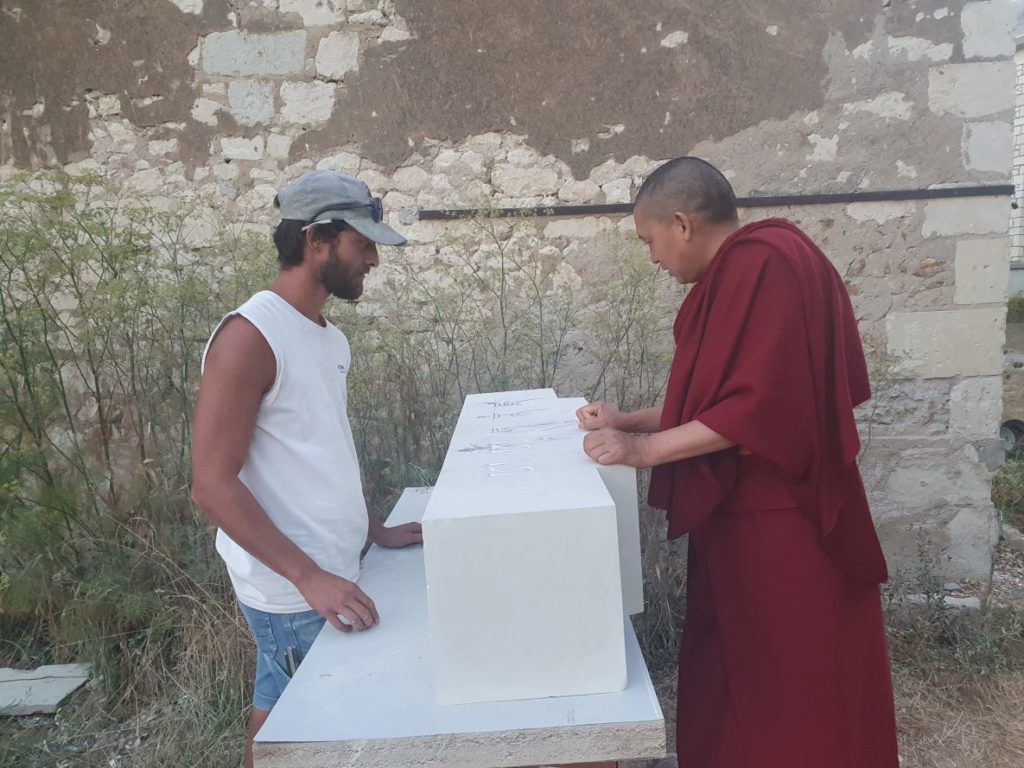
What do you like about Shenten?
Conditions are very good here, especially for meditation, the best place for meditation, I would say. No noise from the neighborhood, then there is a SuperU, the large supermarket, very close, you can get whatever you need very easily.
Can you share with others about what effect of the practice you feel personally?
Yes, we do lots of practice at Shenten, especially the practices of Four generosities, but also lots of meditation. All this leads the mind to be more peaceful and to release attachments. Fortunately, a monk’s life is very simple, I have no business to take care of, so my attachments are not very strong (he laughs). We have heard so many times that life is short and illusory, changing and impermanent, nothing is trustable in the condition of the relative truth. But hearing it is not enough, we need to integrate this view within our life. This is what I keep in my mind and try to do all the time.
You give teachings to western students, sometimes at Shenten, also in Germany, jointly with Khenpo Tenpa Yungdrung Rinpoche. You might teach more but it looks like there is a linguistic barrier…
Yes, my English is not good. I did not get an opportunity to learn other languages when I was a child, only my native tongue. That’s why my English is so poor. When I got my geshe degree I was already an adult and not so flexible to learn a foreign language. It is not easy for me. I learned it to some degree, but it is difficult to make it better. I have attended language courses in England and also in the US, in Los Angeles, but I have not progressed much. Especially in the US it seemed to me that it was not very effective, we had little chance to practice the language, so I did not continue. Anyway, I can speak and I understand other people when they speak. I learned most by listening to Yongdzin Rinpoche´s and Khenpo Rinpoche´s teaching in English and being with them when they speak with others.
Photos: Jitka Polanska
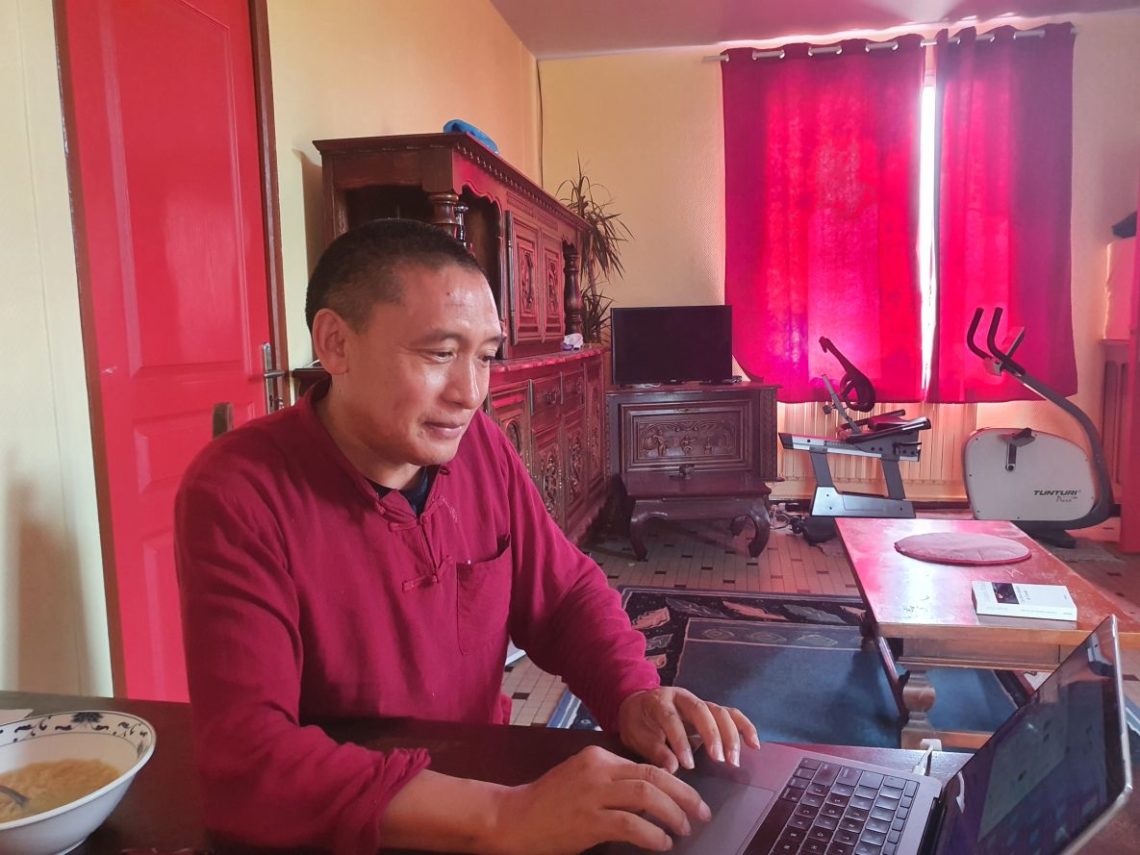


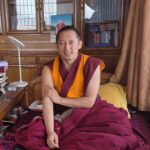




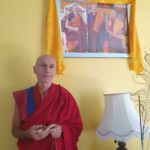




Jitka Polanská
November 11, 2022 — 12:45 pm
a comment from Dominique Courtier who could not manage to post it herself (we will have the problem checked)
“Thank you to make us know more about this very discreet lama.
I keep the image oh him looking very young at the table where I bought my little statue of Tapiritsa in Vimoutiers, Normandie, for my first Bon retreat and meeting with Rinpoche and Khenpo, 2003. We were only the 2 of us near this table where I felt like buying this Statue. He was sort of witness of something private and profound : my “meeting” with Tapiritsa ?
I was already also a student of Chogyal Namkhai Norbu Rinpoche that I met in 2002 in Merigar. Then The little statue was empowered by Yongzin Rinpoche. I can not help associate him with this scene and the blessing later of my Tapiritsa. He probably does not remember…”